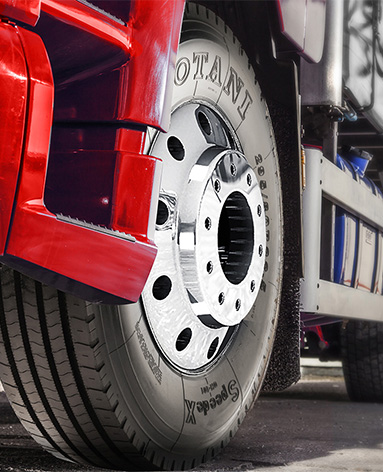Aug . 07, 2024 04:25 Back to list
Understanding the Importance of Tractor Trailer Brake Drum Maintenance for Safe Driving
Understanding Tractor Trailer Brake Drums Essential Components of Heavy-Duty Trucks
Tractor trailers, with their immense weight and size, are vital for the transportation of goods across various distances. Given their scale, the braking system is one of the most crucial safety features. Among the components of this system, the brake drum plays a significant role in ensuring that these vehicles can stop effectively and safely. Understanding the function, maintenance, and technology associated with brake drums can enhance safety and performance for operators and fleet managers alike.
What is a Brake Drum?
A brake drum is a cylindrical metal component that works in conjunction with brake shoes to facilitate stopping a vehicle. When the driver applies the brakes, hydraulic fluid from the master cylinder moves the brake shoes outward against the inside of the drum. This friction generated between the brake shoes and the drum slows down the wheel's rotation and ultimately stops the vehicle. Brake drums are typically made from cast iron or aluminum alloy due to their durability and heat dissipation properties.
Importance of Brake Drums in Tractor Trailers
Due to the significant weight of tractor trailers—often exceeding 80,000 pounds when fully loaded—the braking system must be robust and reliable. Brake drums are essential because they provide the necessary friction to bring these large vehicles to a halt. Moreover, they are designed to dissipate heat generated during braking, preventing overheating, which can lead to brake fade and reduced stopping power.
Maintenance and Inspection
tractor trailer brake drum

Regular maintenance and inspection of brake drums are vital for ensuring safety on the road. Over time, brake drums can suffer from wear, heat damage, or cracking, which can compromise their efficiency. Fleet managers and drivers should routinely check for signs of wear, such as scoring on the drum's surface or uneven wear patterns.
It is generally recommended to replace brake drums when they have worn down to a certain thickness specified by the manufacturer. Additionally, routine checks of brake shoes, springs, and hydraulic systems should coincide with brake drum inspections to maintain overall brake system health.
Advances in Technology
Recent advancements in brake technology have led to improvements in the design and material composition of brake drums. Manufacturers are now experimenting with composite materials that are lighter and dissipate heat more efficiently than traditional options. Furthermore, some newer models incorporate ventilation designs that allow air to flow around the drum, reducing thermal buildup during heavy braking scenarios.
Moreover, integrated brake systems equipped with sensors provide real-time data on brake performance and wear levels. These systems can alert drivers to potential issues before they become critical, providing an additional layer of safety.
Conclusion
In summary, brake drums are a fundamental component of tractor trailer braking systems, directly influencing safety and performance. Regular maintenance and prompt replacement of worn-out components are crucial for ensuring these heavy vehicles can safely navigate our roads. As technology continues to advance, the evolution of brake systems will enhance the safety measures in place for commercial trucking. Understanding the role and maintenance of brake drums can lead to safer operations and reduced accident risks, benefiting both drivers and the wider community. With proper care, these components can ensure that tractor trailers continue to operate effectively and efficiently for years to come.
-
Your Brake Drum Man: Quality & Performance Parts
NewsAug.21,2025
-
Explore Japan: Ultimate Travel Guide & Authentic Experiences
NewsAug.19,2025
-
Your Brake Drum Man: Premium & Reliable Brake Drums for Sale
NewsAug.18,2025
-
ROR Web Development: Build Fast, Scalable, Secure Apps
NewsAug.17,2025
-
Scania Brake Drums: OEM Quality for Optimal Safety & Durability
NewsAug.16,2025
-
R.V.I: Advanced Remote Visual Inspection for Precision
NewsAug.15,2025
